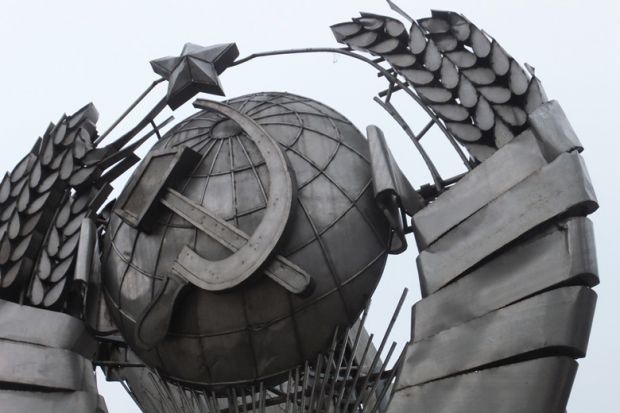“Societies should really know better than to commemorate civil wars, for their outcomes are all too frequently, in the long term, ephemeral,” warns Jonathan Smele in this ambitious and thought-provoking new book.
Having won most of the fighting for control of the former tsarist empire, the Bolsheviks set about memorialising their triumphs through renaming Russia’s buildings, streets, towns, mountains and lakes in honour of their heroes, as well as erecting sculptures and public art in celebration of their victories. Yet, ultimately, even they could not escape the “revenge of the past”. According to Smele, these representations were demolitions waiting to happen. In the post-Soviet era, memorials to the Bolshevik victors have now been erased, and a process of re-memorialising has begun. In Moscow, the remains of defeated White leaders have recently been reinterred, while in Georgia monuments to Red heroes are to be replaced with ones that attest to “Russian aggression”. Thus, while the more familiar Red versus White aspect of the civil war has faded from contemporary relevance, other “Russian Civil Wars” – the Azeri-Armenian clashes, Armenian-Turkish relations, Russo-Ukrainian tribulations, Russo-Georgian wars, Muslim insurgency in the North Caucasus, and definitions of citizenship in the Baltic states, unfrozen by the disintegration of the USSR in 1991, are, as Smele remarks, “still very much alive”.
Over the past decade, scholars of modern Russia have begun to talk about a “continuum of crisis” spanning 1914-21. Here, Smele extends this reconceptualisation and offers an interesting corrective to depictions of a unitary Russian civil war. His book’s title neatly summarises his three main contentious arguments: the plurality of civil wars, the placing of the word “Russian” in inverted commas, and the span of conflict from 1916 to 1926. He argues spiritedly that there was not one civil war following the Bolshevik revolution of October 1917, and contests the usual chronological parameters in which conflict began in early or mid-1918, and ended with the major White defeats and withdrawal of intervening foreign troops, and the introduction of the conciliatory New Economic Policy between 1920 and 1922. Finally, Smele stresses that not all the wars took place in Russian territory, or even primarily involved Russian combatants.
This work presents a masterful synthesis of the best English and Russian language scholarship on the subject, in which the more familiar conflict between political forces that sought to inherit the territory of the tsars is enriched with detailed exploration of the attempts of many non-Russian national and religious groups to divide the former empire. Smele’s drama begins and ends in Central Asia – a location, he points out, that is closer to Mumbai than Moscow. He foregrounds the Muslim rebels of Central Asia, whose armed resistance he traces to the summer of 1916 when many of the tsar’s Muslim subjects rebelled against forced mobilisation into labour battalions to service the Imperial Russian Army. Further anti-colonial revolts broke out again in 1917‑18, resulting in the formation of the guerrilla Basmachi movement, which was significantly pacified only by June 1926.
In highlighting the fascinating transnational and multi-ethnic aspects of the struggles of this tumultuous decade, Smele’s book presents a colourful compendium of overlapping conflicts in a disintegrating and reconfiguring empire, and will stimulate fruitful reflection in the field.
Lara Douds-Cook is lecturer in Russian history, University of York.
The ‘Russian’ Civil Wars, 1916-1926: Ten Years that Shook the World
By Jonathan D. Smele
Hurst, 480pp, £35.00
ISBN 9781849044240
Published 18 February 2016




